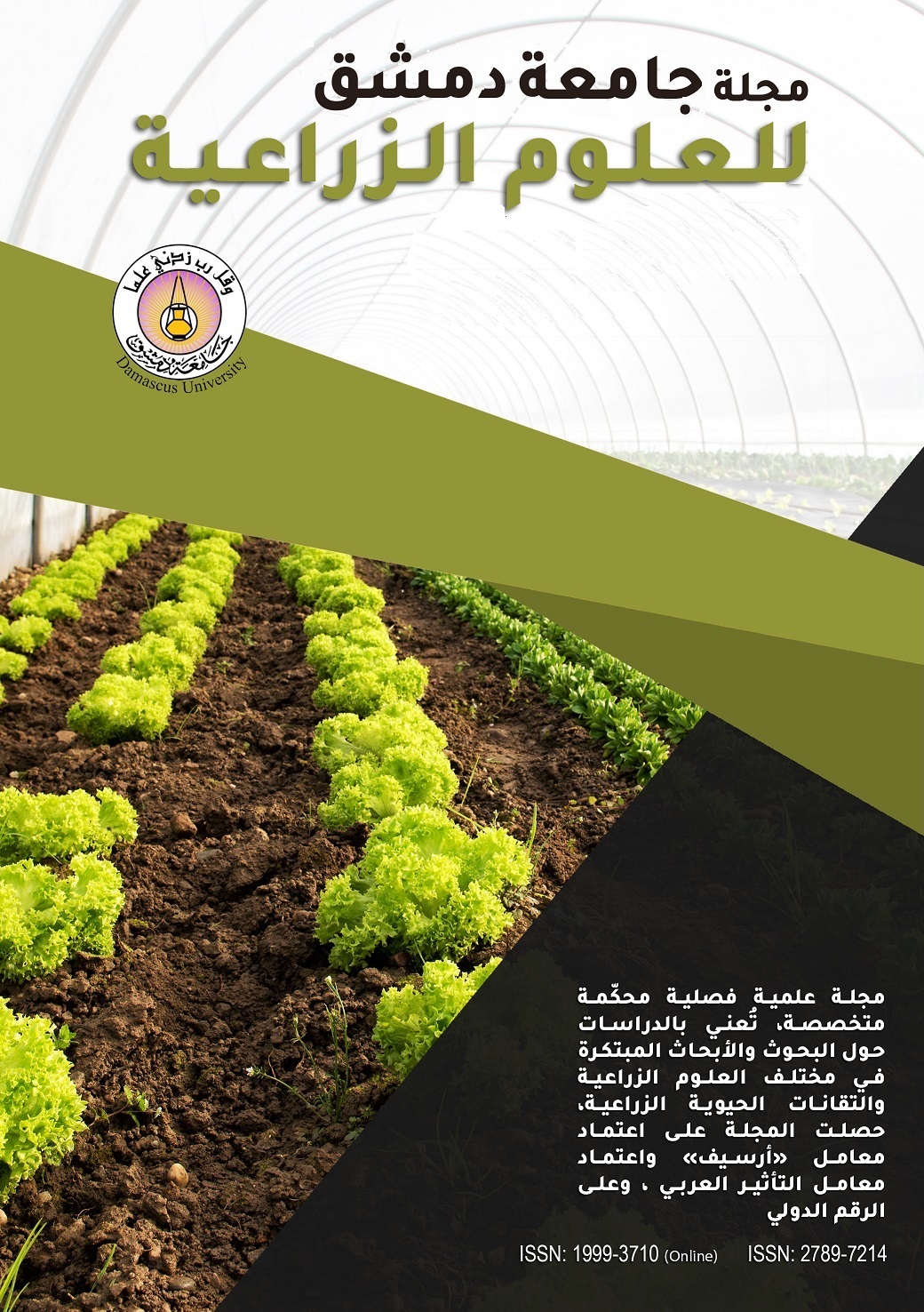Effect of corms weight and the successive seasons on the floral and corms production of saffron (Crocus sativus L.)
Keywords:
Saffron, successive seasons, corms weight, stigma yieldAbstract
The experiment was carried out in Qara city, Damascus countryside governorate, Syria, during four seasons (2016-2019) for flowering production and during three seasons for corm production, in order to study the effect of the different weight groups of corms (1-4, >4-8, >8-12 g) and the successive seasons on the saffron production of flowers, dry stigma and corms. Significant increasing occurred, in flowering and dry yields of stigma, with the advancement of the seasons, The dry yield of stigma reached
.09 , 0.53 , 1.51 , 3.11 g/for the first to the fourth season, respectively. The rate of multiplication, in addition to the total yield of corms per unit area increased significantly with the advancement of the seasons. The number of commercial large corms (greater than 8g) with the advancement of seasons. The high weight of the corms used in agriculture led to significant increases in the number of flowers, dried stigmas yield and corms weight. The results of the interaction between seasons and corms weight highlight the development yields of flowers ,dried stigmas and corms in large and medium – sized corms with the advancement of seasons , noting delay of the small-sized corms in entering the production of dried stigma until the third year .This indicates the importance of choosing the appropriate weight of corms in the first steps of establishing saffron cultivation , and the emergence of a good possibility for the development of medium-sized (>4-8 g) corm production across seasons compared to the small ones.

